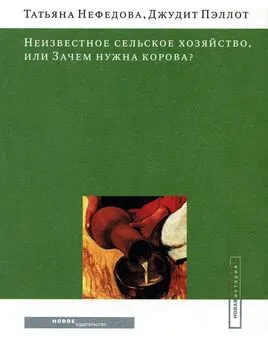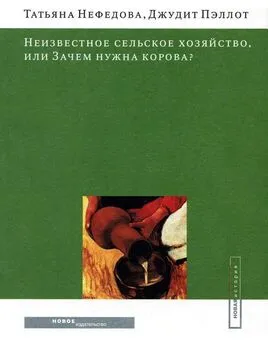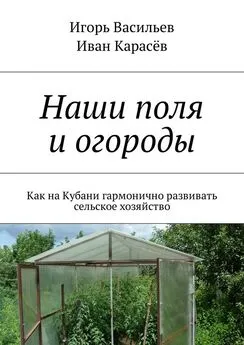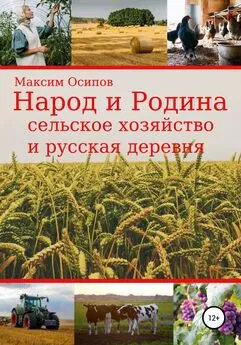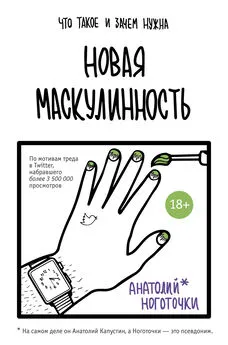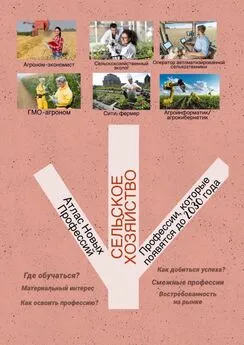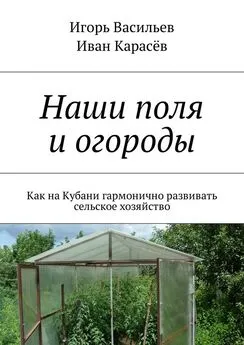Татьяна Нефедова - Неизвестное сельское хозяйство, или Зачем нужна корова?
- Название:Неизвестное сельское хозяйство, или Зачем нужна корова?
- Автор:
- Жанр:
- Издательство:неизвестно
- Год:неизвестен
- ISBN:нет данных
- Рейтинг:
- Избранное:Добавить в избранное
-
Отзывы:
-
Ваша оценка:
Татьяна Нефедова - Неизвестное сельское хозяйство, или Зачем нужна корова? краткое содержание
Известные специалисты по российскому селу Татьяна Нефедова (Институт географии РАН) и Джудит Пэллот (Оксфордский университет) представляют в своей книге детальное исследование индивидуального сельского хозяйства современной России во всем его многообразии – от Крайнего Севера до плодородного юга, от московских пригородов до провинциальной глубинки, от эффективных фермерских хозяйств до маленьких огородов, спасающих своих хозяев от нищеты.
Неизвестное сельское хозяйство, или Зачем нужна корова? - читать онлайн бесплатно ознакомительный отрывок
Интервал:
Закладка:
Шанин 1999
Шанин Т. Эксполярные структуры и неформальная экономика современной России // Неформальная экономика: Россия и мир / Под ред. Т. Шанина. М.: Логос, 1999.
Шкаратан 2002
Шкаратан О.И. Информационная экономика и пути развития России //Россия в современном мире: Поиск новых интеллектуальных подходов /Третьи сократические чтения по географии. М.: Университет Российской академии образования, 2002.
Шмелев 2002
Шмелев Г.И. Производство сельскохозяйственных продуктов населением России. М.: Academia, 2002.
Штейнберг 2002А
Штейнберг И. Типология сельской власти (социологический анализ типов руководителей сельхозпредприятий в постсоветском селе) //Рефлексивное крестьяноведение: Десятилетие исследований сельской России. М.: Московская высшая школа социальных и экономических наук; РОССПЭН, 2002.
Штейнберг 2002Б
Штейнберг И.Е. Реальная практика стратегий выживания сельской семьи: сетевые ресурсы // Куда идет Россия?.. Формальные институты и реальные практики. М.: Московская школа социальных и экономических наук; Интерцентр, 2002.
Экономическая активность 2002 Экономическая активность населения. М.: Госкомстат России, 2002.
Экономическая география 2003 Экономическая география мирового развития, XX век / Под ред. Ю.Г. Липеца, В.А. Пуляркина, С.Б. Шлихтера. СПб.: Алетейя, 2003.
Энгельгардт 1960
Энгельгардт А.Н. Письма из деревни:
12 писем, 1872–1887. М.: Государственное издательство сельскохозяйственной литературы, 1960.
Эрхард 1991
Эрхард Л. Благосостояние для всех. М., 1991.
Эфендиев, Болотина 2002
Эфендиев А.Г., Болотина И.А. Современное российское село на переломе эпох и реформ: Опыт институционального анализа // Мир России: Социология, этнология. 2002. № 4.
Ястребинская 1999
Ястребинская И.А. Бюджетные методы исследования семейного хозяйства // Аграрная экономическая наука на рубеже веков: Методология, традиции, перспективы развития/ Под ред. А.В. Пе-трикова. М.: Всероссийский институт аграрных проблем и информатики, 1999.
Amelina 2000
Amelina М. Why Russian Peasants Remain in Collective Farms: A Household Perspective on Agricultural Restructuring // Post-Soviet Geography and Economics. 2000. Vol. 41. № 7.
BOCHNER1982
BochnerS. The social psychology of cross-cultural relations // Cultures in Contact: Studies in Cross-Cultural Interaction. Oxford: Pergamon, 1982
Furnham,Bochner1986
FurnhamA., BochnerS. Culture Shock: Psychological reaction to unfamiliar environments. London; N.Y., 1986.
Harm Tho Seeth, Chachnov, Surinov 1998
Harm Tho Seeth, Chachnov S., Surinov A. Russian Poverty: Muddling Through Economic Transition with Garden Plots // World development. 1998. Vol. 26. № 9.
Schultz 1981
Schultz T. W. Investing in People: The Economics of Population Quality. Berkeley: University of California Press, 1981.
SCHRUMPFENDE STADTE 2004 Schrumpfende Stadte / Hrsg. von Ph. Oswalt. Bonn: VG Bild-Kunst, 2004.
Scott 1976
ScottJ.C. Moral Economy of the Peasant. London, 1976.
Contents
7 Introduction Chapter i. People’s Farming Always Existed
10 1.1 What is this book about?
14 1.2 How the investigation was conducted
19 1.3 The eradication and development of private farming in Russia
32 1.4 The current role of people’s farming
Chapter 2. The Diversity of the Rural Household Plot
39 2.1 From collectivized livestock husbandry to private
50 2.2 Sun, fruit and poultry
57 2.3 In the northern pre-J Jrals
66 2.4 Kargopo Vefrom arable husbandry to gathering
74 2.5 Valdai: agriculture and second home owners
79 2.6 Individual farming in the environs of cities
84 2.7 Clusters of commercial vegetable production
95 2.8 The objective laws of chaos
Chapter 3. Resources for People’s Farms
100 3.1 Socio-demographic resources
106 3.2 Land resources
115 3.3 Inputs into the people’s sector from large farms
124 3.4 Non-agricultural environmental resources
132 3.5 The geographical resource base
Chapter 4. Geographical Differentiation
in the character of People’s Farming 145 4.1 Volume and productivity
161 4.2 For themselves or for sale
174 4.3 The Ethnic mosaic of Individual farming
Chapter 5. The Varied Character of Private Farming
195 5.1 Gastarbeiter on plantations
202 5.2 Multifaceted private farmers
214 5.3 The shoots of private entrepreneurship
219 5.4 Urban dwellers’agriculture
231 5.5 The variability of private farming in Russia
235 5.6 Small-scale farming and land conflicts
Chapter 6. Socio-economic changes in rural Russia
246 6.1 Problems in privatefarming in Russia
256 6.2 The informal economy and the self-organisation of farming in rural districts 266 6.3 Changes in the socio-economic structure of rural society
274 6–4 The private sector informer and existing socialist countries:
East-Central Europe – Russia – China
285 6.5 Social and economic policy in rural Russia
296 Conclusion. What next?
305 References
317 Summary
Summary
The book «Russia’s unknown agriculture or The need to own a cow» is written by two geographers, Dr Tatyana Nefedova of the Russian Academy of Sciences and Dr Judith Pallot of Oxford University, UK. Its subject is a little studied aspect of Russian agriculture. Much is known about large and medium-scale agricultural enterprises – they are the subject of political debate at national and local level and statistics are collected relating to them. However, large and medium-scale farms are responsible for less than one half the value of agricultural produce in Russia. Private “peasant” farms about which there has been so much discussion among politicians and in the press are responsible for only 4 per cent. The majority of food in Russia is, in fact, produced by the people in their spare time, including all their days off and holidays, on small plots of land. Urban dwellers produce more than their rural counterparts. In order to illuminate this shadowy aspect of the agrarian economy, the authors visited many regions of Russia interviewing the producers themselves, the managers of large farms and local authority officials, and analysed the available published and unpublished data. The methodology they employed is discussed in the introductory chapter to the book. In this same chapter the authors give a detailed review of the history Russian private agriculture in the twentieth century, including of the phases and results of agrarian reforms of the 1990s. The chapter describes the current multifaceted structure of Russian agriculture and the role of “people’s farms” in the agrofood production system 1 and in the household economy of the producers.
The second chapter is devoted to specific examples of how “ordinary people” in Russia’s regions carry out farming on heir plots. The aim of the chapter, using both word pictures and photographs, is to demonstrate the rich variety of people’s farming (personal subsidiary farming) in different rural districts in regions with different physical-geographic conditions: the South (using the example of Stavropol krai and the Volga provinces), the North (1n the Pre-Urals and Archangel oblast), the suburbs and in Russia’s glubinka. The last section of the chapter describes places that, it turns out, can be found “anywhere” in Russia but not “everywhere”. These are special places where people’s farming has assumed a commercial and specialised character that place it on a par with other clusters of entrepreneurial activity in post-Soviet Russia.
The third chapter is devoted to the identification of the universal factors underpinning people’s farming. Principal among these is resources the following: social-demographic; land; capital, which takes the form of inputs from the large-farm sector; natural and non-agricultural-resources. In the chapter the authors discuss the importance of human capital to small-scale farming, how much land is used and how small is the demand for expanding land resources, the inter-dependence of small and large-scale farming and the practice of natural resource harvesting in Russia’s forests. The chapter concludes with a systematic analysis of the geography of the natural resource base of people’s farming, the limits imposed upon it by population and resources, and the influence on it of the current state of large farming.
The fourth chapter is more overtly geographical. Using maps, diagrams and tables, the authors show the variation by administrative region in the number of livestock kept on people’s farms, production of dairy products, meat, vegetables and potatoes. One section is devoted to the degree of commercialisation of production and it links to the market. The principal geographic factors determining the patterns observed are distance to the cities and physical geography. The chapter concludes with the discussion of the influence of ethnicity on the geography of people’s farms. Examples of ethnically specific people’s farms are described in Stavropol krai, the Volga provinces and the Pre-Urals, including in places where there is nascent ethnic conflict. The role of socio-demographic and economic factors in worsening ethnic relations latter cases is analysed.
The fifth chapter shifts to a discussion of private farming in general in post-Soviet Russia. The list of private farms includes both formal and informal forms, such as private “peasant” farms created under land reforms, “ga-sterbeiter-gangs” which rent land for vegetable production from large enterprises in the southern and eastern regions of European Russia, people’s farms producing for themselves or for the market, and, last but not least, urban dwellers allotments attached to their dachas or next to rural houses they have inherited from rural relatives or bought and in orchard and garden cooperatives. In the chapter the market involvement of these different land users is compared and a typology developed based on their degree of commercialisation. The latter produces a much finer division of Russia’s private food producers than is captured in the official categorizations. The final section of the chapter discusses the types of conflict that can arise at the present time over land used for people’s farming by referring to two places where this is already a major problem – the south of European Russia and in the environs of Moscow city.
Читать дальшеИнтервал:
Закладка:
